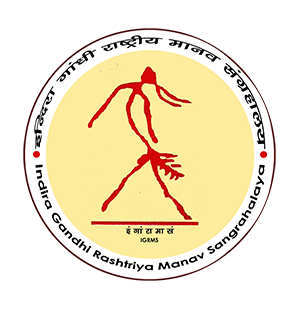तमिलनाडु के कुंभकारी एवं टेराकोटा परंपरा
क्षेत्रः मलई गाँव
जिलाः पदुकोत्तई
राज्यः तमिलनाडु
टेराकोटा जो पक्की मिट्टी होती है, कला अभिव्यक्ति का सबसे प्राचीन एवं मूल रूप है।अल्पमूल्यता एवं सुलभता से प्राप्त होने वाला यह माध्यम प्रागैतिहासिक समय से मानव को लुभा रहा है। धीरे-धीरे टेराकोटा कला का विकास हुआ और सामान्य व बुनियादी रूपों से और अधिक रचनात्मक रूपों की और बढ़ी। इसी संदर्भ मे तमिलनाडु मे भी जानी वाली टेराकोटा का एक रूप जो कि अपने छ: मीटर ऊंचे घोड़ों के लिए प्रसिद्ध है, यहाँ है। अय्यनार देवालयों मे इन वृहद आकारीय टेराकोटा घोड़ों को अय्यनार देव कि सैन्य आत्माओं को परिवाहन उपलब्ध कराने के लिए स्थापित जाता कि वे रात्री मे घूम कर गाँव और खेतों कि रक्षा कर सकें तथा दुष्ट आत्माओं से लड़ सकें। अय्यनार देव को समर्पित देवालय तमिलनाडू मे बहुत सामान्य है। पारंपरिक तौर पर हर गाँव, प्रवेश द्वार पर असंख्य टेराकोटा के घोड़ों से रक्षित होते है जो कि बुरी आत्माओं से रक्षा करने वाली एक धार्मिक आकृति- अय्यनार ग्राम देवता का है। आयनार देव बड़ी बड़ी मूछे, लम्बे दंत के साथ विशाल नेत्र, जिनसे वे लगातार निगरानी करते है, वाले होते है। अपने सिपाहियों या वीरों के साथ प्रवेश द्वार पर स्थापित रहते है। इसके अतिरिक्त गाँव के अन्य देवी देवता भी टेराकोटा से बने होते है। बनाये गये अन्य उत्पादों में पानी निकालने एवं रखने के लिए घड़े (साला) एवं रसोईघर में उपयोग किए जाने वाले बर्तन जिनकी प्रतिदिन आवश्यता ग्रामीणों को होती है, शामिल है। कृषि उत्सव पोंगल के दौरान घर मे खाना बनाने और अनाज भंडारण के पुराने पात्र एवं तुलसी के पुराने गमले को हटाकर नये रखे जाते है। कुंभ जीवन की निरंतरता, सृजन, संहार एवं पुर्नजनम के प्रतीक होते है। तमिलनाडु में कुंभकार कुयावार अथवा वेलार नाम से जाने जाते है एवं ये अपनी उत्त्पत्ति विश्वकर्मा जो स्वयं दिव्य शिल्पकार है, से मानते है।
मूलतः टेराकोटा एवं कुंभकारी स्थानीय रूप से प्राप्त होने वाली दो प्रकार की मिट्टी इस्तेमाल की जाती है। अन्य कलारूपों की तरह ही कुंभकारी एवं टेराकोटा कला भी काफी मेहनत एवं अनोखी प्रकिया कि आवश्यकता होती है। तमिलनाडु के टेराकोटा एवं पॉटरी में विभिन्न प्रकार के पात्र जिनमें आरासानी (शादी-विवाह में प्रयुक्त छल्लेदार आकार, अंडाकार और छोटी गर्दन वाला पात्र), दृष्टी बोम (बुरी नजर से रक्षा हेतु), नंदी (बैल) एवं ऐसे ही अन्य आकृतियाँ शामिल हैं, बनाई जाती हैं । पॉटरी और टेराकोटा किसी भी संस्कृति का स्वाभाविक रूप है और विराशत की एक परंपरा को दर्शाता है जो उस संस्कृति के लोगों को प्रस्तुत करता है।
POTTERY AND TERRACOTTA TRADITION OF TAMIL NADU
Area: Malaiyur village
District: Puddukottai
State: Tamil Nadu
Terracotta that is baked clay is one of the most ancient and original forms of art. The easy availability of this medium attracted the man as early as from prehistoric times. Gradually, terracotta art evolved and shifted from banal and basic designs to more creative versions. The terracotta art in reference here is the one practiced in Tamil Nadu, which is famous for its six-meter-high horses. In the temples of Ayyanar, these life-size terracotta horses were placed at the shrines to provide transportation for Ayyanar’s spirit soldiers, enabling them to travel through the villages and fields at night to fight against evil. Shrines paying homage to Ayyanar are very common in Tamil Nadu. Traditionally each village is guarded at its entrance by an enormous terracotta horse, which is the horse of Ayyanar, a religious figure, the Gramdevta and its protector against all evils. Ayyanar has an enormous moustache, big teeth and wide eyes that keep a constant vigil. He stands at the entrance surrounded by his horses and commanders or veerans. Besides these, most of the other village deities are also made of terracotta. Other products crafted include water drawing and storing pots (saala) and cooking vessels that the villagers need for daily use. During the harvest festival of Pongal, old pots in the house are replaced by new cooking pots, vessels for storing grain and a new pot for the auspicious tulasi/holy basil plant. The pots symbolize the continuity of life, creation, destruction and rebirth. In Tamil Nadu, potters are known as kuyavar, kulalaar or velar and they trace their origin to Vishwakarma, the divine craftsman himself.
Basically, two types of locally available clay are used for making terracotta and pottery. Like any other art form, pottery and terracotta require an intensive amount of effort and a procedure. Several items of pottery and terracotta made in Tamil Nadu include Aarasani (A terracotta pot having a ring base and elliptical body with a short neck used in marriage), Dristy Bome (image as a protection from evil eyes), Nandi (Bull) and more such objects. Pottery and terracotta objects are an intrinsic form of any culture and showcase the heritage and legacy the people of that culture have to present.



